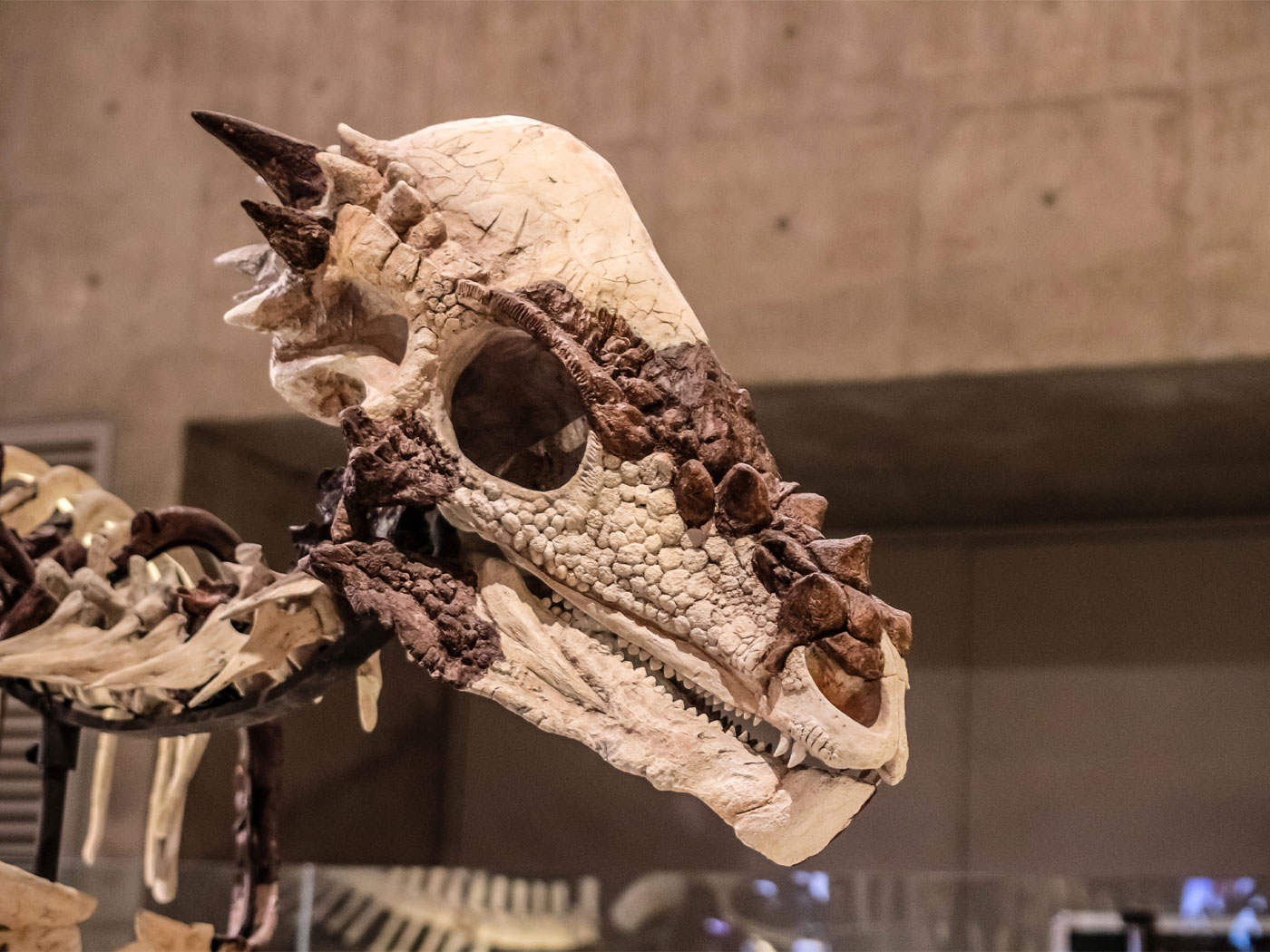by Vernon R. Cupps, Ph.D., and Brian Thomas, M.S.*
During a recent televised debate between Bill Nye and Ken Ham, Mr. Nye claimed that fossils are never found “out of place.”1 If by this he means they are never found outside of the rock strata that define the supposed age in which the fossilized creatures lived, he’s wrong. He then challenged viewers to find one single contrary instance anywhere in the world. That’s easy.
The fossil record is not nearly as evolutionary as Mr. Nye would have us believe. It features fossils mixed in myriad strange combinations. For example, clam kinds occur all throughout Earth’s sedimentary layers, frequently mixed with dinosaurs, and the fossil clams look like today’s clams.2
To the unbiased eye, a fossil bed full of dead and buried, long-gone creatures looks more like a graveyard than a slice of life. It records sudden, violent death and catastrophic covering in mud. These observations fit the worldwide Flood model—at which Mr. Nye so glibly scoffs—much better than evolution’s slow, normal, everyday processes, which generally don’t produce any fossils.3
The unique “Cambrian” creature Anomalocaris qualifies as a contrary instance to Nye’s concept of tidy evolutionary fossil records. Once used to identify Cambrian rocks, it was recently discovered in Ordovician rocks, supposedly deposited 50 million years after the Cambrian.4
The five major classes of mollusks, as well as modern parrots, penguins, ducks, owls, and possums, that are living today can all be found in dinosaur rock layers.5 A fossil Tasmanian devil look-alike even has a dinosaur still in its stomach.6
What about plant fossils? Carl Sagan said on his 1980 television series Cosmos, “The dinosaurs perished around the time of the first flower.”7 However, scientists have since discovered rhododendron, poppy, modern lotus, black walnut tree leaf, and sweetgum tree leaf fossils in dinosaur rock layers.5 The recent discovery of beautifully preserved 240 million-year-old pollen grains showed that flowering plants lived 100 million years earlier than they were supposed to have evolved, using evolutionary time.8 With that one flower find, secular scientists essentially had to admit their venerated evolutionary tree was off by 100 million years!9
A tree fossil in Tennessee represents many that lie across several rock layers.10 A kind of fossil tube worm designated as 550 million years old and once used to identify Cambrian rocks was found below Cambrian strata and still lives today, unchanged.11
Despite these discoveries, fossils do fall into a general order—sea creatures in lower rocks, shore creatures higher, then swamp and land creatures in uppermost layers. Instead of reflecting evolution from sea to land, this order reflects different environments deposited in successive tsunami-like episodes during the Flood year. The mixed-up and still-living fossilized organisms refute the concept of a tidy evolutionary sequence and confirm the biblical concept of a recent flood that buried all kinds of creatures in a worldwide cataclysm.
References
- February 4, 2014, televised debate between Bill Nye and Ken Ham. Posted on debatelive.org, accessed April 5, 2014.
- Archibald, J. D. 1996. Dinosaur Extinction and the End of an Era. New York: Columbia University Press, 128.
- Morris, J. and F. Sherwin. 2010. The Fossil Record: Unearthing Nature’s History of Life. Dallas, TX: Institute for Creation Research, 53.
- Thomas, B. Out of Place Marine Fossil Disrupts Evolutionary Index. Creation Science Update. Posted on icr.org June 14, 2011, accessed March 21, 2014.
- Werner, C. 2009. Living Fossils: Evolution: The Grand Experiment, Vol. 2. Azzara, C., A. Prunty, and L. Welch, eds. Green Forest, AR: New Leaf Press, 233-240.
- Thomas, B. 2013. The Details Are in the “Devil.” Acts & Facts. 42 (3): 18.
- Druyan, A., executive producer, and K. Gibson, producer. 2000. Cosmos: Carl Sagan, Episode II: One Voice in the Cosmic Fugue. DVD. Cosmos Studios, Inc.
- Hochuli, P. A. and S. Feist-Burkhardt. 2013. Angiosperm-like pollen and Afropollis from the Middle Triassic (Anisian) of the Germanic Basin (Northern Switzerland). Frontiers in Plant Science. 4: 344.
- Clarey, T., and B. Thomas. 2013. Pollen Fossils Warp Evolutionary Time. Acts & Facts. 42 (12).
- Morris, J. 2009. A Classic Polystrate Fossil. Acts & Facts. 38 (10): 15.
- Moczydlowska, M., F. Westall, and F. Foucher. 2014. Microstructure and Biogeochemistry of the Organically Preserved Ediacaran Metazoan Sabellidites. Journal of Paleontology. 88 (2): 224-239.
* Dr. Cupps is Research Associate at the Institute for Creation Research and received his Ph.D. in nuclear physics at Indiana University-Bloomington. Mr. Thomas is Science Writer at the Institute for Creation Research.














